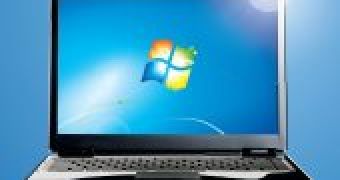Windows 7’s modest system requirements in comparison with Windows Vista’s have made it possible for customers to upgrade to the latest iteration of the Windows client, without having to also upgrade their hardware. While Vista was somewhat of a resource hog, Windows 7 is designed to run on the same computers that accommodate Windows XP, a nearly decade old operating system, which was released in 2001. In fact, the latest two Windows clients launched by Microsoft seem to be in different leagues altogether. While customers have pounded Vista with incessant criticism, a recent survey by Forrester Research has indicated that the level of satisfaction is extremely high for Windows 7 upgraders.
The market analysis company reveals that no less than 86% of Windows 7 customers surveyed expressed satisfaction with running the OS. According to statistics from Microsoft, in excess of 90 million licenses of Windows 7 had been sold in the first four months since the platform was released to the public. If I were to go out on a limb (not really), I’d say that Windows 7 has already passed the 100 million mark in terms of units sold since GA.
“We've just published two new reports concerning Windows 7 adoption and satisfaction, leveraging Forrester's Consumer Technographics data,” said JP Gownder, an analyst with Forrester. “The reports show that Windows 7 penetrated the consciousness of the market by the end of 2009, with a strong majority of US consumers aware of the product. We also found that consumers who adopted Windows 7 in Q4 were generally very satisfied with their Windows 7 PCs.”
Statistics from Forrester Research additionally indicate that Windows XP and Vista users are not really looking to make the jump to Windows 7. In this regard, the market analysis firm noted that only 10% of XP and Vista users surveyed expressed plans to upgrade to Windows 7 in the next six months (via EWeek).
At the same time, Gownder emphasized that there had been a change in upgrade behavior because of Windows 7. It seems that customers are no longer upgrading both the OS and the PCs, simultaneously. “Instead, the majority of consumers have acquired new OSes when they purchase their new PC. These are known as ‘replacement cycle upgrades’,” he stated.
According to Forrester Research, only 45% of the users surveyed had bought a new PC preinstalled with Windows 7. At the same time, no less than 43% of 490 US computers users questioned revealed that they had upgraded from either Windows XP or Windows Vista on their existing computers.
“With Windows 7, however, upgrade behavior was much stronger. Why? In short, Windows 7 is a thinner client program than was Windows Vista, meaning that it works well on older hardware configurations. In the past, OSes were designed with Moore's Law as an underlying assumption - that is, that newer PC hardware would be significantly faster and more powerful than the previous generation's hardware. Windows 7, however, is a less burdensome OS than Windows Vista. The rise of Netbooks, the physical assets of multi-PC households, and an attachment by many consumers to their Windows XP machines all contributed to the need for a sleeker, thinner Windows OS, which Windows 7 delivered,” Gownder added.
Microsoft Windows 7 90-Day Eval VHD is available for download here.
Another Windows 7 RTM Enterprise 90-Day Evaluation is available for download here.

 14 DAY TRIAL //
14 DAY TRIAL //